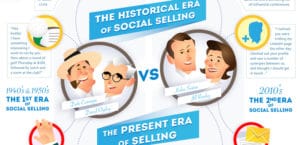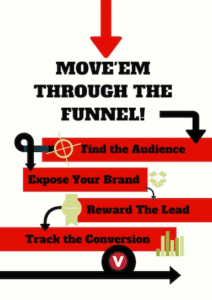At Voxus, we run a variety of social media programs for our clients. Some clients rely on us for basic content creation and management; others tap our expertise in promoted content campaigns and conversion tracking. As we move through the 2015 planning process with them, one question emerges over and over: “What are your key social media recommendations for 2015?” While these definitely vary depending on market, technology, sales model, etc., I thought I’d take a moment to provide six high-level recommendations:
Create a dedicated monthly promoted content budget. With Facebook’s organic reach believed to be below 6 percent, Twitter organic reach believed to be between 10-30 percent (probably more on the side of 10 percent), and LinkedIn at roughly 20 percent, you’re fighting a losing battle on social if you’re not buying views. The only way to achieve truly inspiring organic results is to have insanely viral content (and we all know that’s really hard to do consistently). You can eliminate some of the guesswork associated with engagement, CTR and audience growth if you pay to promote your content (but, make sure it’s quality content). Just like ad buys, SEO and email marketing, social promoted costs need to be built into your 2015 marketing budget.
Facebook is a good example of why this shift to paid content is happening. In a nutshell, the number of posts are rising and you can’t read all of them. You just want to read the most relevant or engaging ones. TechCrunch calls this the “filter feed problem.” Facebook narrows that list down for you based on a super-secret algorithm (interest, post, creator, type, recency and lots more) called EdgeRank. For a business, this means you’re essentially earning your place in the customer news feed (and boy, is earning it hard!). Or, you beat the system and buy your way in, which has the added benefit of targeting. Twitter and LinkedIn also allow advanced targeting. While Facebook is taking the reduction of organic reach to the extreme right now, I wouldn’t be surprised if we see more social platforms shift toward this approach in 2015 (I would actually bet on it).
Bonus Point: Remember, social media is a tool in the marketing toolbox, but it also applies to corporate communications, PR, recruiting, sales and more. It shouldn’t be an isolated line item, it should be integrated throughout the organization. Being able to integrate narratives and stories from across the organization can add a dynamic element to your content.
Make your multimedia truly multi-media. And of course, more video, video, video. Screen shots and product shots aren’t enough. It’s time to take your media to the next level. Are you using animated GIFs? Are you using infographics or unique creative assets (such as cartoons or mock posters)? And, video… let’s talk video. I know, this isn’t a new idea, but video is still underutilized by brands. Doing two or three videos a year doesn’t mean you “do” video. With the cost of video production coming down (check out ThemeDragon) and the ability to do amateur style videos, there’s no reason your brand can’t do monthly videos for social. It’s a winning strategy and delivers high engagement.
Bonus example: We recently did a video campaign in conjunction with a product launch and promoted it via social media. We had more than 6,000 engagements on the video content, with the majority of the cost per engagement ranging from $.09 to $1.00 depending on the video. Best of all, nearly 70 percent of the viewers completed the entire video (on average only 25 percent of viewers who start a video on YouTube or Facebook complete it).
Your sales team needs to be leveraging social media. Social selling was a big buzz word in 2015. Companies scrambled to tackle it (or understand it). It doesn’t have to be complicated. But, you do need to invest in helping your sales team understand social media. This can range from simply having a social presence to proactively sharing company content consistently on their social profiles, to integrating backend sales tracking tools for social, to buying new features like LinkedIn’s Sales Navigator (and at only $90-ish, this tool is a no-brainer.
Bonus Infographic: Want to understand social selling a bit more, check out this infographic we did for our client QuotaDeck that was published on Inc. Magazine.
Measure for success and take your program plaid. The ultimate measure of success is sales, but, not all companies can track social conversion and contribution to pipeline. Audience used to be the measure of success, but with farming, these numbers are easily manipulated. Really, the best metric for overall health is engagement, but only if you’ve been able to achieve a relevant audience size. Poor engagement related to a large audience usually means dilution. Amazing engagement on a smaller audience usually means you still have ways to grow. The key is to watch the trend over time and evaluate it. If you set audience goals and you see that meeting those goals results in a reduction of engagement, you may be falling victim to adding audience that isn’t your core target (or having poor content).
The other side of measurement is what I call going plaid (or striving to go plaid). Social media is moving fast, really fast, light speed fast. Everything is changing quickly, getting more complicated, it’s often ridiculous, err, ludicrous. To really understand the contribution social is making to a marketing program, you need to have compete insight into what it’s causing – I call this going plaid (an ode to Spaceballs). It’s that “aha” moment where you can connect the dots from your content being posted, to engagement, to clicks, to leads, to sales. Where you can compare social marketing to email marketing to digital ad buys and more. Where you can measure a cost per conversion for social media. Challenge your teams to help you figure this out. It starts with Google Analytics and UTM tracking, and moves into marketing automation (like Marketo) and CRM tools. When you go plaid, measuring social value comes down to numbers and compelling content.
Bonus tip: Spend the time and effort to identify your key social influencers. Track how they engage with you, and work to grow those relationships so they become brand advocates. They can be major, major allies in getting a message out and validating your brand quality.
Set the “content” hook. You have less than six seconds to engage the reader. Make damn sure your images are great, your message is compelling, and the content delivers on your promise. Doing that is not easy. It requires sexy writing. Clever story telling. Taking risks. Being different. But always, always delivering on the promise. If you dupe your audience, they’ll never click again. Creating great content can take time and money, but you can also find cheap fun approaches too (how about taking that old webinar PPT and turning it into an eBook). But, don’t take shortcuts on social content. You wouldn’t push out an email campaign to your customer list if it cut corners. Think of your social followers (or prospective followers) as a qualified email list.
Bonus tip: Check out Canva.com, Piktochart.com and Gliffy.com. They all provide free tools to quickly and easily create graphical tidbits or charts. Have a single stat or idea you want to highlight, throw it into a Canva graphic (for example, I just did the one below in about 15 minutes to prove the point).
Those who automate dominate. Social media can get complex fast, with lots of content, platforms, metrics, etc. Automating your programs through tools and applications can alleviate some of the burn. Using tools like Bitly, Hootsuite, Buffer and Sprout Social are great ways to start posting, automating, listening and reporting on your campaigns. For more advanced users, tools like Simply Measured and Radian6 can provide more insightful information and take your strategy to the next level.





